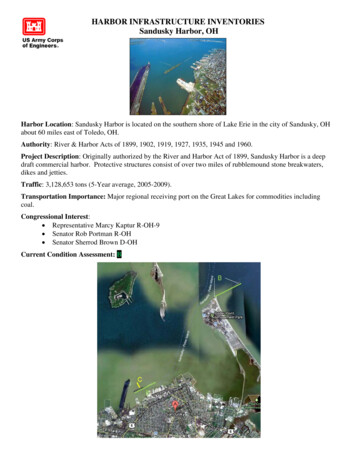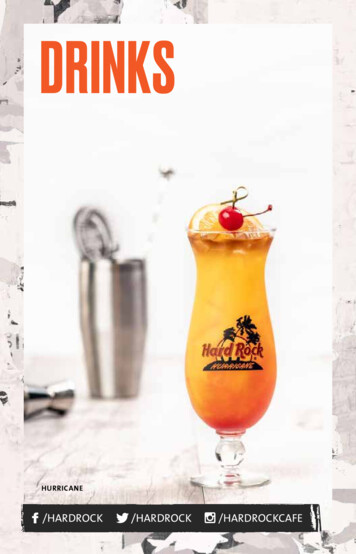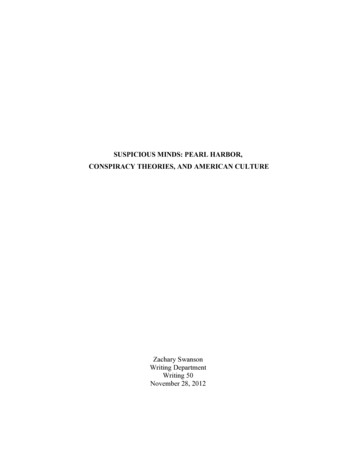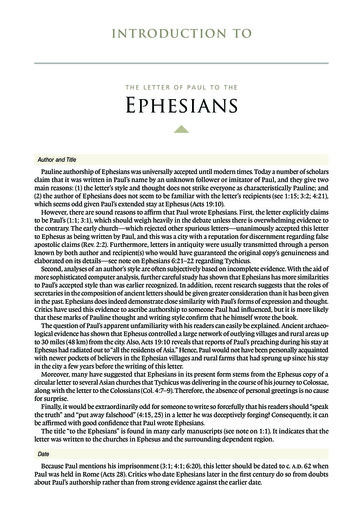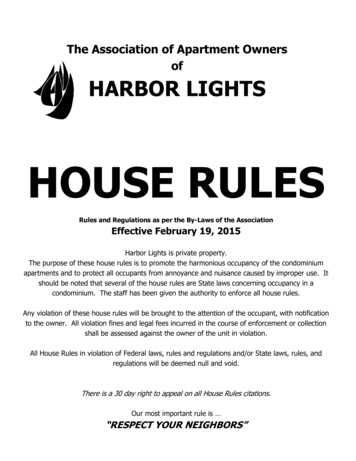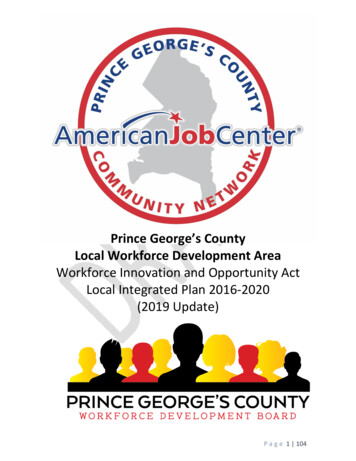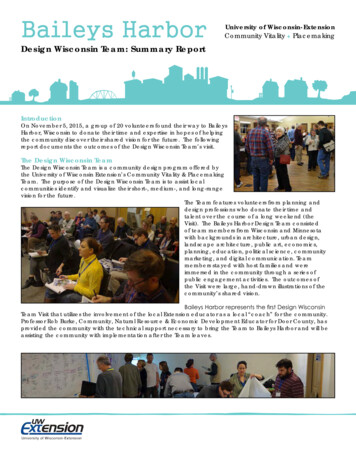
Transcription
Baileys HarborUniversity of Wisconsin-ExtensionCommunity Vitality PlacemakingDesign Wisconsin Team: Summary ReportIntroductionOn November 5, 2015, a group of 20 volunteers found their way to BaileysHarbor, Wisconsin to donate their time and expertise in hopes of helpingthe community discover their shared vision for the future. The followingreport documents the outcomes of the Design Wisconsin Team’s visit.The Design Wisconsin TeamThe Design Wisconsin Team is a community design program offered bythe University of Wisconsin Extension’s Community Vitality & PlacemakingTeam. The purpose of the Design Wisconsin Team is to assist localcommunities identify and visualize their short-, medium-, and long-rangevision for the future.The Team features volunteers from planning anddesign professions who donate their time andtalent over the course of a long weekend (theVisit). The Baileys Harbor Design Team consistedof team members from Wisconsin and Minnesotawith backgrounds in architecture, urban design,landscape architecture, public art, economics,planning, education, political science, communitymarketing, and digital communication. Teammembers stayed with host families and wereimmersed in the community through a series ofpublic engagement activities. The outcomes ofthe Visit were large, hand-drawn illustrations of thecommunity’s shared vision.Baileys Harbor represents the first Design WisconsinTeam Visit that utilizes the involvement of the local Extension educator as a local “coach” for the community.Professor Rob Burke, Community, Natural Resource & Economic Development Educator for Door County, hasprovided the community with the technical support necessary to bring the Team to Baileys Harbor and will beassisting the community with implementation after the Team leaves.
Baileys Harbor Team Schedule Friday, November 6, 20158:15 AMDesign Team convenes at Town Hall, downstairs meeting room8:30 AMOverview and introductions (UWEX)9:00 AMBaileys Harbor Historical Society (Suzanne Bauldry)9:20 AMCounty Soil & Water Conservation (Greg Coulthurst)9:40 AMPlanning and zoning (Mariah Goode, county; Gordon Rowley, town)10:00 AM Baileys Harbor Community Association (Brynn Swanson)10:20 AM Walking tour of Town Hall/library, Fire Station, Marina, and Brann parking area (Doug Smith)10:40 AM Door County Economic Development Corporation (Sam Perlman)11:00 AM Door-Tran (Pam Busch)11:20 AM Door County Human Services/ADRC (Jake Erickson)11:40 AM Baileys Harbor youth (Sophie Friedenfels, Kelly Leonard, and Magan Leonard)12:00 PM Lunch with seniors and youth at Town Hall12:45 PM Youth attending Baileys Harbor Kids’ Day at Town Hall1:30 PMWalking tour of downtown to Toft House1:40 PMToft House tour2:00 PMBus tour4:00 PMTeam meeting to prepare for Town Meeting at Town Hall conference room5:30 PMCommunity potluck supper at Town Hall auditorium6:00 PMTeam joins community for supper at Town Hall auditorium6:45 PMIntroductions and overview at Town Hall auditorium7:00 PMTown Meeting & Dotmocracy at Town Hall auditorium9:00 PMTeam debriefing and deliberating at Town Hall auditorium Saturday, November 7, 20158:00 AMReview Dotmocracy results from Town Meeting at Town Hall conference room8:30 AMCommunity values9:00 AMSnow carding exercise to develop themes and framework9:30 AMDevelop framework for outputs10:30 AM Review framework elements11:30 AM Working lunch12:30 PM Production time5:00 PMWorking supper: title blocks, hang boards on wall, and presenters develop notes5:30 PMPowerPoint photo shoot6:30 PMSet-up presentation technology7:00 PMTeam presentation to the community at Town Hall auditorium9:00 PMTeam debriefing and deliberating Sunday, November 8, 20159:30 AMFarewell gathering and carpooling loading at Town Hall
Community ValuesOn Friday, November 6, approximately 170 members of theBaileys Harbor community participated in a group exercisedesigned to share thier hopes and concerns about thefuture.Following a pot-luck dinner, community members wereasked to answer key questions onto notecards. After a somesmall group discussion and synthesis, participants reviewedall the responses for each question and voted for theirfavorite responses with stickers (a.k.a. “dotmocracy”). Themost popular responses for each question are listed belowwith the number of “votes” indicated in parentheses.1. What characteristics do you love most about Baileys Harbor and what are you most proud of? Peaceful, friendly, quiet community (20). Natural environment (17). Small town personality (10).2. What Baileys Harbor issue or concern that makes you mostanxious? Lack of young families/lack of job opportunities (25). Development that will change the “feel” of Baileys Harbor(22). Lack/resistance to community growth (8).3. It’s 2030, what makes Baileys Harbor unique in Door County? Year-round economy (16). Eco-tourism development (9). The Ridges (8). Hip-young-old-new variety of businesses (7).4. There are many perspectives in Baileys Harbor (locals, natives,tourists, farmers, seasonal, etc.) What can we all agree needs to bedone for the future of Baileys Harbor? Business development that enables jobs and prosperitywhile keeping small town feel (32). Maintain beauty, greenspace, and natural resources (16). Keep and attract young families (15). Housing for workers (6).
5. What kind of project would motivate you to get involved? Dog park (10). Trail system (8). Attract small businesses (8). Nature-related activities (8). Year-round thriving community (6). Maintain beauty of village (6).6. You find a Genie in a Bottle at Anclam Beach What is your ONE wish for the future of Baileys Harbor? Sustainable year-round economy (18). Sustained intelligent growth (10). Balancing environment with business (9). Diverse population-seniors, young families, etc.(8). Internet (8). Full service town-grocery, medical, housing for youngand old (7). More businesses to stay open all year (6).After reviewing the outcomes of the “dotmocracy” exercise, Design Team members summarized the resultsinto a list of “Community Values” from which to develop short-, medium-, and long-range visions of the Town’sshared vision of the future.Big PictureSeveral key “big picture” themes that came out of the Baileys HarborDesign Team Visit. A Year-Round Economy: create opportunities to sustain and growbusinesses that will contribute to a vibrant year-round economy. Identity: encourage growth without losing unique qualities thatdefine Baileys Harbor. Nature: enhance, promote, and protect Baileys Harbor’s naturalassets, as they are significant. Quality of Life: maintain and enhance quality of life for all existingand future community members.These “themes” helped frame the work of the Design Team when theybegan developing ideas that would eventually be drawn onto the finalpresentation boards. The following outcomes represent those ideasthat the Team felt they had the expertise and time to address.
Organizational StructureThis illustration depicts the change process as it relates to the community structuresof Baileys Harbor. Here we see how an inventory of “Citizen Skills” and “CommunityAssets” can inform a “Public Based Asset Development” program/group. This program/group, along with the “Economic Development Working Group” and “Natural/CulturalInventory” informs the “General Public” about unique opportunities that the communityof Baileys Harbor can act upon to enhance the quality of life for its citizens. The“General Public” can then choose, when necessary, to work through or with formalized“Boards and Commissions” to implement change that supports a “Vibrant, Year-RoundFuture” for Baileys Harbor.
Activity NodesThis illustrates the location of “activity nodes” that contribute to the identity of BaileysHarbor. These special places are community amenities or special places that givemeaning to Baileys Harbor. When thinking about what makes Baileys Harbor special,consider mapping them and developing strong connections between them.
How To Do ItThis diagram illustrates how a community successfully implements positive change. Asyou can see, the diagram is not necessarily linear, nor does it rely on one particularelement or group for direction. In fact, it shows how interdependent each of theelements are for contributing to a community that “get things done”. Specificelements include: Baileys Harbor Community: people who live, work, and play in Baileys Harbor thatcontribute to Baileys Harbor’s identity Built Capital: the physical, human-made structures and infrastructures that contributeto Baileys Harbor’s identity Natural Capital: the natural amenities that contribute to Baileys Harbor’s identity Cultural Capital: the historic and cultural attributes that contribute to Baileys Harbor’sidentity Human Capital: the individual people of Baileys Harbor whose interests, time, andtalents can be leveraged to institute positive change Social Capital: the groups of people and their interactions with one another thatwhen coordinated, can bring about positive change. Political Capital: the influential individuals and groups of people (elected or nonelected) who motivate, connect, envision, or support positive change Financial Capital: the economic forces that exist within Baileys Harbor that leveragepositive change
Connections: Amenity IdentityThis drawing illustrates locations of significant amenities that contribute to the uniquecharacter and identity of Baileys Harbor. The purpose of mapping these locations is toidentify areas of future investment/enhancement/protection and to establish physical/visual/social connections to reinforce Baileys Harbor’s uniqueness.
Connections: Bike RoutesYou have done a lot of planning work around connectivity. For example, your 2014County Bike Plan and Baileys Harbor Comprehensive Plan provide recommendationsfor connecting community amenities. This illustration refines your work with suggestedshorter recreational bike routes and a couple of longer routes for serious riders whowant to traverse the peninsula. We also recognize the importance of multi-purposetrails as symbolized by the horse’s backside.
Enhancing Community AccessThe Design Team heard from a variety of community groups and individuals whostressed the importance of enhancing existing community gathering spaces. The TownHall is an excellent opportunity to build off an existing community asset that will providenecessary services, enhance individual quality of life, provide gathering spaces foryouth and other groups, and encourage health and wellness. The Team encouragescommunity members to work together to provide for extended hours of operationand encourage educational and recreational programming that benefits all ages. Iffuture demand warrants additional space, consider a site that is centrally-located nearexisting public areas in the downtown.
Connections: NetworksThose of us who work with communities know that no one entity is in charge ofcommunity change. A lot of our collective work is about mobilizing the community.The diagram above illustrates the power of networks in which many community actorsaddress a wide variety of activities. Those actions take place because some of youplay a catalytic role. In order to implement change, consider our “Tackle Box” whichoutlines the steps critical for implementing positive community change.
In addition to the social networks are the physical networks of a community. Local public amenities should beeasy to find and encourage people to access them. One such means might be to develop a series of publicway-finding devices that allow users to locate destinations using the “Range Light” method of aligning objects.In the illustration we see a user standing at one such object and aligning themselves with a far away device tofind their desired destination.
Connections: Quick Success to Drive Next StepsReady, Set, Go! Implementation of positive community change doesn’t need to beoverwhelming, costly, or grueling. In fact, successful community change usually startswith projects that are quick, simple, inexpensive, and fun. This drawing illustrates someexamples of small projects that might yield big results that will build momentum in thecommunity to take on larger projects. Some examples are new entryway signage andsmall parks with informational kiosks that direct users to areas of interest while telling thestory of Baileys Harbor.
Living Well Affordably: Summit ViewOne of the most significant challenges facing Baileys Harbor is to develop a yearround economy that attracts and retains professionals and families while providingfor opportunities to age in place. The Town Board purchased land adjacent torecreational park for future development. While the Team agrees that communities, ingeneral, should make every attempt to develop underutilized sites before developinga undeveloped area, we thought it necessary to illustrate what type of developmentmight suit the needs of Baileys Harbor at that site.The drawings illustrate a mixed-housing conservation subdivision that preserves existingwooded areas and forms multi-modal connections from the downtown to the existingrecreational park. The site provides for a mix of housing types to address “gaps” in theexisting housing profile.
Single-Family Detached Condominiums: provide single-family housing lifestyle, but at a reduced entry-cost.Row Housing: provides for medium-level incomes to enter the housing market by lowering operational andinfrastructure costs.Multi-Family Housing: provides for entry-level incomes to find local housing that focuses on outdoorrecreation and lifestyle.Summit View Tower: a 5-story condominium with panoramic views of Lake Michigan with a public meetingarea reserved on the top floor. This structure requires an exemption from or change to existing heightrestrictions. The purpose of building a “tower” is to demonstrate how additional density (especially onewith views of the lake) may be able to subsidize the costs for the rest of the development. Higher density“towers” with smaller footprints are excellent ways of reducing the impact on the natural environment whileincreasing housing options that increase the tax base.Summit View Assisted Living: a multi-story building that provides for a spectrum of housing and care to meetthe needs of an aging population that wants to stay connected to nature.These structures would be arranged so to preserve as much natural area as possible while encouraging peopleto get outside and enjoy nature. A system of trails complete with benches, informational kiosks, a dog park,and retention pond provide residents and visitors opportunities for health and wellness, social interaction, andoutdoor recreation. Individual buildings could feature photo-voltaic solar panels to reduce energy costs andrainwater collection and distribution systems for community gardening.
Living Well Affordably: Infill HousingSmall, detached single-family condominiums would offer young families an opportunityto enter the housing market without paying for the full value of the property and stillhave a “traditional” model for raising their family. A community land trust and/orrevolving loan fund for housing could help subsidize purchasing costs. For folks whoonly need temporary housing or very simple accommodations, consider portable smallhouse units that could be arranged as an eco-village (use of solar photo-voltaic cellsand shared water and waste systems) or as individual sites located in underutilized sitesthroughout the community.
Living Well Affordably: ImplementationThis drawing illustrates the different implementation tools available to address housingneeds in Baileys Harbor.Revolving Loan Fund for Housing: a loan program that local investors and public entitiescould contribute towards for the purpose of lower housing costs either through downpayment assistance or land purchase.Business Venture Fund & Community Venture Bank: locally-controlled fundingoperations contributed to by local businesses and individuals for the purpose ofbridging the costs of business succession and growing local businesses that meetBaileys Harbor’s needs. Tax-Incremented Financing (TIF) Districts: revenue-generating mechanisms thattarget business development critical to Baileys Harbor’s needs. TIFs require technicalknow-how and are allowed by Town governments in limited circumstances. Community Land Trust for Affordable Housing: locally-controlled funding operationthat lowers the cost of home ownership by purchasing land from property.Homeowner is responsible for cost of structure, not entire property. Trust holds landas an investment to assist in purchasing future lands.
Unique Precious ResourcesBaileys Harbor’s natural features pose unique benefits and challenges. The karsttopography of the peninsula coupled with a mix of human-made development oftenresults in severe water quality issues that are extremely difficult to manage. Communitymembers and individuals need to be aware of the fragility of water quality and makepurposeful efforts to mitigate and reduce the potential for contamination. This canbe addressed through educational programs, demonstration projects, and localcommunity investment in environmentally-sensitive design and uses.
Green InfrastructureIn order to preserve, protect, and enhance the unique natural assets of Baileys Harbor,the community must commit to developing a “green infrastructure”. Just like roads,sewer, and waterlines, green infrastructure is a collection of coordinated devicesthat form a system that provides a community service. Some examples of devicesfor addressing water “in Town” include underground filtration/containment/diversionor above ground vegetation. Regional devices might include wind and solar energysystems located along the “spine” of the county in agricultural areas and diverseagriculture (orchards, vineyards, vegetables, etc.) that could contribute to localvalue-added agriculture (canneries, distilleries, wineries, flash-freeze, etc.).
Natural Resources: Action PlanThis drawing illustrates the short-, medium-, and long-range action items that BaileysHarbor could pursue to protect, enhance, and promote their natural resources. Short-range: Inventory natural resources, develop a Ridges Trail from downtown, createcommunity gardens, and coordinate actions with conservation partners. Medium-range: Investigate wind energy alternatives for agricultural areas andphotovoltaics solar for rooftops and solar fields, transform and promote Baileys Harboras an “eco-hub” in which the community’s unique natural assets are central, andencourage and demonstrate “green building” and “green infrastructure” projects/programs. Long-range: Positioning Baileys Harbor to adapt to changes in climate.
Protected LandsOver 40% of the lands within Baileys Harbor are protected natural areas. This distinctionprovides Baileys Harbor with a unique opportunity to become the eco-lifestyle andeco-tourism hub of Door County.
Experience NatureBaileys Harbor’s natural assets provide for year-round opportunities for recreation andeducation. Consider a community-wide effort to leverage these opportunities forenhancing quality of life and economic development.
Live LightlyCommunity members stressed the importance of sustaining a year-round economy thatprovides local services to residents and visitors alike. A locally-own food cooperative witha recycling “drop off” could provide those necessary services while promoting healthyliving with respect for the environment.
Green NetworkBy weaving the natural areas into the fabric of the community (through trails, informationalkiosks, urban vegetation, community gardens, rain gardens, and educational/recreationalprograms/events), Baileys Harbor can demonstrate to other communities how tosuccessfully protect its natural areas and increase biological diversity while encouragingsustainable economic development. This illustration provides ideas as to where to locate“green paths” that connect important places in the community which emphasize localmobility(living), education(learn), or recreation(experience).
Live, Learn, & Experience NatureAt the heart of Baileys Harbor is its downtown, a place that gives Baileys Harbor its uniqueidentity. Keeping Baileys Harbor “special” requires the community to relentlessly pursueopportunities that protect, enhance, and promote its unique features. The downtownhas several opportunities in which the community can preserve its historic and maritimeimage while fostering an ecologically-responsible identity unique to Door County. In thisillustration, we see opportunities for providing residents and visitors enhanced experienceswith the waterfront and public areas with pedestrian-friendly and eco-friendly alleys,plazas, and pervious parking. New structures might integrate maritime and “green”building features that reinforce Baileys Harbor as the place in Door County to live, work,and play in nature.
Sign HereThe Design Wisconsin Team provides communities with a visual representation of thecommunity’s shared vision of the future. In order to realize this future, communitymembers who have the time, talent, and passion for positive change can “sign up”.
Conclusion: Addressing the Big PictureThe Design Wisconsin Team can propel a community into implementation by using a fast-paced process thatgenerates inspiring images of the future. Because of the pace of the process, not all of the ideas end up on thedrawings. The following text summarizes how the Design Team addressed each Baileys Harbor’s “Big Picture”themes along with some additional information that may not have appeared in the final drawings.A Year-Round EconomyCreate opportunities to sustain and grow businesses that will contribute to a vibrant year-round economy. Housing: The Design Team heard from a lot of business owners and community residents theimportance of providing affordable year-round and seasonal housing opportunities in order to meetthe needs of a seasonal economy transitioning into a year-round economy. Several of the presentationboards focus on affordable housing types, financing options, and suggested locations. What does notappear on the final drawings are some of the changes in which the community will need to think abouthow housing is built, owned, and financed. Businesses: Transitioning from a seasonal economy towards a year-round economy requires retentionof existing businesses, expansion of existing businesses, and creation of new businesses. Several keystrategies that should be emphasized are: Business Incubator: A subsidized space with technical assistance (consulting, mentoring, prototypecreation, etc.) for entrepreneurs to create and grow thier business. Broadband COOP: A locally-owned cooperative whose purpose is to bring reliable and affordablehigh-speed internet to the community. Credit Union for Business Financing: A locally-owned financial organization whose mission is tosupport and grow local businesses. Food COOP: A locally-owned cooperative that meets local grocery needs while supporting localgrowers.IdentityEncourage growth without losing unique qualities that define Baileys Harbor. Uniqueness: Community members recognize the tension that exists between new development andthe existing environment. New development could make meaningful contributions to the identity ofBaileys Harbor if it respondes to the maritime, historic, and environmental sensitive character of thecommunity. Shaping development may or may not require incentives and/or design guidelines, butmost likely will require a locally-driven dialogue about what is the “look” of Baileys Harbor and whattypes of uses contribute to the “idea” of Baileys Harbor. Local Art: Baileys Harbor has opportunities to enhance and promote its identity through local art.Design Team member (and professional artist) Angela Richardson has some specific observations:“In addition to its extraordinary natural landscape, Baileys Harbor also has a remarkablearts pedigree. This lesser-known attribute could be put to great use in attracting yet anothersegment of the tourist market to Baileys Harbor. In any case, it deserves to be celebratedmore explicitly in the narrative of the town.
Notable aspects include: Albert Zahn’s Bird Park, the FrogtownArt Colony site, Björklunden’s Boynton Chapel, the beautifulmosaic on Stella Maris Parish created by Johann Minten ofMilwaukee’s famed Oakbrook-Esser Studios, and the recentoutdoor mural by Door County’s own Ram Rojas.As we know, art is one of many ways that people connect toplace, to history, and to one another. Using folk artist AlbertZahn’s legacy as a jumping off point, I’ll share one example ofhow art could be used in Baileys Harbor to connect the past tothe present for residents and visitors alike.While in the library, I noticed on display a carved woodensculpture by Randy Zahn, great-grandson of Albert. This was adelightful discovery and it got me thinking. After returning home,I read more about Albert Zahn and learned that most of hisoriginal artwork is in now private collections or museum storage.It occurs to me that there might be an opportunity here to paytribute to Zahn while also allowing people to learn both a newskill and more about the cultural history of Baileys Harbor.I imagine a scenario in which Randy Zahn is invited to lead woodcarving workshops for Baileys Harbor residents and visitors at TheRidges Sanctuary Center. Some are for adults and teens; othersfocus on children and parents. In addition to learning the storyof Zahn and Bird Park, each participant carves and paints asmall bird during the workshop. All of the birds created are thenassembled and displayed in one place. Perhaps they’re shownon the grounds at Bird Park (once a year on Zahn’s birthday?)or inside The Ridges Center with information pointing out thenearby folk art site and also the blacksmith shop on Main Street(which belonged to Albert’s nephew, August Zahn.) Or maybethe birds find their perch on a holiday tree inside of Town Hall.The bird carving ritual becomes an annual tradition – one thatcelebrates Zahn’s artistry and involves Baileys Harbor citizensacross generations.Of course, this is but one example of how active engagementwith the unique artistic history of Baileys Harbor might contributeto further connection and growth within the community.”
NatureEnhance, promote, and protect Baileys Harbor’s natural assets as they are significant. Fragility: The natural assets help define the unique character of Baileys Harbor. Residents and visitorsalike understand and appreciate its beauty, but may not be aware of its fragility. The Design Teammade a point of underscoring this issue in hopes that the community take a strong stance in protectingits amazing resource for future generations. Eco-lifestyle: In addition to the natural beauty, these natural resources provide opportunities forexisting users and future users to engage physical activities for recreation and wellness. Several of theDesign Team drawings focus on creating physical connections in the community using trails along withrecreation and gathering spaces along with the notion of “living lightly” in a way that protects thenatural environment. In addition, new development might be encourage to adopt “green building”standards that not only protect the natural environment, but also reinforce Baileys Harbor’s identity as aplace in which nature is a central. Eco-Economy: Already, Baileys Harbor has taken advantage of its unique natural assets to attractvisitors from afar. Expanding this to include businesses that focus on eco-tourism may lead to a localeconomy that enhances and protects its natural assets. The Design Team explored several ideas(renewable energy, local recycling center drop-off, silent sports retailer, additional trails and parks,unique way-finding devices) that appear across a variety of presentation boards.Quality of LifeMaintain and enhance quality of life for all existing and future community members. Small Town Character: The downtown is the hub of community activity and identity. Purposefulinvestment in facilities and activities in downtown Baileys Harbor could reinforce its identity whilemaintaining a sense of scale that is appropriate for a “small town”. Local Services: The Design Team heard from many of the community members the importance ofhaving access to grocery, medical care, and internet. Addressing those needs may require newpartnerships to be developed. Cooperatives may be one strategy that Baileys Harbor use to addressthose needs. Multi-Generational Housing: Like many typical rural communities, Baileys Harbor is aging rapidly andwith very few younger families moving in. Developing affordable housing that meets the needs ofyoung and old may require new ways of thinking regarding housing ownership, housing type, andhousing financing. The Design Team provided many illustrations detailing these ideas, some of whichmay require new partnerships and changes to local ordinances.Final CommentsThe Design Wisconsin Team process provides a “glimpse” of a community’s shared vision for the future. Thedrawings represent a handful of ideas the Team Members believe could help the community realize thiervision. Because of the fast-paced nature of the process, many ideas never made it to the drawings or were notdeveloped enough to be included in this report. What the community chooses to do with the drawings andideas is up to those who have the time, talent, and passion to create positive change in thier community.
Baileys Harbor: Community Team MembersThanks to the following people who dedicated their time, talents, and passion to bring the Design WisconsinTeam to Baileys Harbor.Francha Barnard, Suzanne Bauldry, Bill Becker, Karen Berndt, Georgia & Ken Beutler, Bob Bultman, R
The Design Wisconsin Team is a community design program offered by the University of Wisconsin Extension's Community Vitality & Placemaking Team. The purpose of the Design Wisconsin Team is to assist local communities identify and visualize their short-, medium-, and long-range vision for the future. The Team features volunteers from planning and
